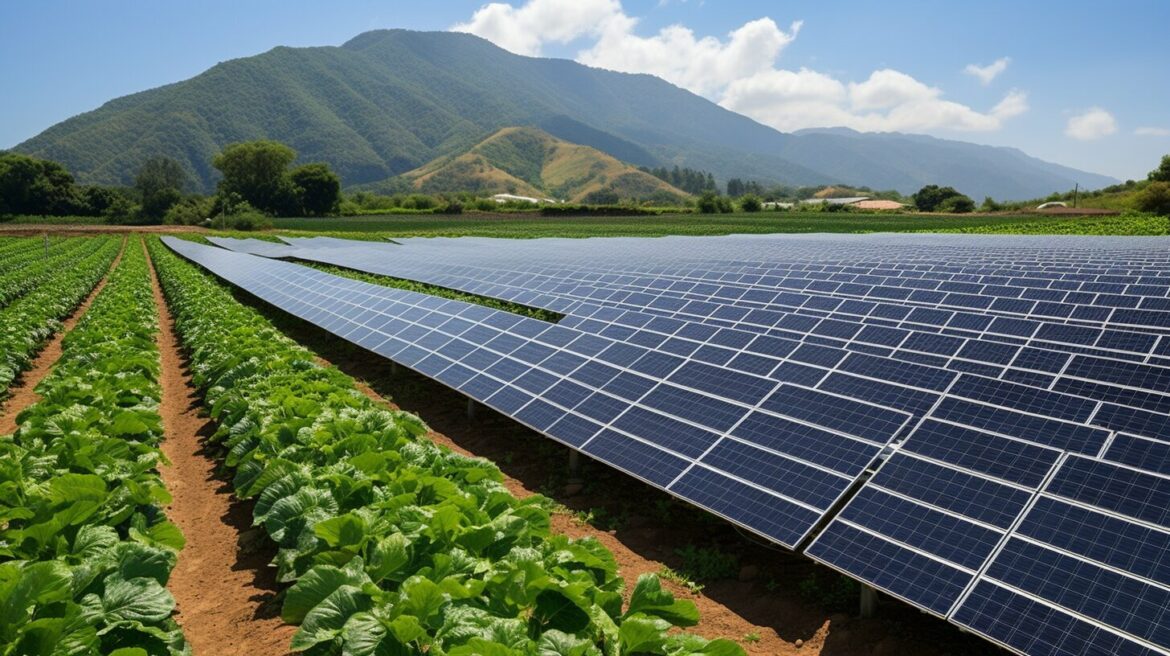Environmental net gain is an innovative concept that has gained traction in recent years as a crucial strategy for achieving a sustainable future. It refers to the idea of increasing the overall value and health of natural ecosystems and biodiversity by creating new habitats or enhancing existing ones to compensate for any impacts caused by human activities such as development or infrastructure projects.
Net gain is a relatively new term that refers to the sum of positive and negative impacts on natural systems, taking into account the services and benefits that they provide to society. The aim of environmental net gain is to ensure that any such negative impacts are offset by creating new or improved habitats, thereby generating biodiversity, ecological, and social benefits. This not only improves the health and resilience of natural ecosystems but also has wider benefits for human well-being and the sustainable development of our communities.
Understanding Environmental Net Gain
Environmental net gain is a term that refers to the idea of improving the environment through development. In simple terms, it means that any development project, whether it is a new housing development, a commercial building, or a new road, should aim to leave the environment in a better state than it was in before the development took place.
The key objectives of environmental net gain are to:
- Protect and enhance biodiversity
- Improve air and water quality
- Reduce carbon emissions
- Promote sustainable development
Environmental net gain is an essential concept for promoting sustainable development. By ensuring that development projects have a positive impact on the environment, we can help to safeguard the planet for future generations.

The Importance of Environmental Net Gain
Environmental net gain is crucial for achieving a sustainable future. As our global population continues to grow, so does the demand for resources and infrastructure. This has led to widespread environmental degradation and biodiversity loss, which in turn has severe consequences for human health and well-being.
The concept of environmental net gain seeks to reverse this trend by ensuring that any development or infrastructure project generates a positive impact on the environment. It requires that the natural environment is preserved or enhanced, and that any negative impacts are compensated for by creating new habitats or increasing biodiversity.
Environmental net gain is important because it provides a framework for balancing economic development with environmental protection. It can help to ensure that our natural resources are used sustainably, and that the services provided by nature are maintained for future generations.

By implementing environmental net gain strategies, we can create a more resilient and sustainable future. This means cleaner air and water, healthier ecosystems, and a better quality of life for all. It also means new economic opportunities, such as eco-tourism and sustainable agriculture, that can help to promote growth and create jobs.
Ultimately, environmental net gain is about fostering a harmonious relationship between people and nature. It recognizes that our well-being is deeply connected to the health of our planet, and that by protecting and preserving our natural environment, we can build a better future for ourselves and for generations to come. You may also find How To Deliver Urban Nature Based Solutions useful.
How Does Environmental Net Gain Work?
Environmental net gain is a process that involves assessing the potential losses and gains in environmental quality resulting from a development project, and striving for a net increase in environmental quality. The process involves a systematic approach that includes identifying the baseline conditions, assessing the potential impacts, implementing mitigation measures, and monitoring the outcomes.
The first step in the environmental net gain process is to determine the current state of the environment in the area where the development is proposed. This involves gathering information on the existing ecosystems, habitats, and biodiversity, as well as the social and economic values associated with the area.
Next, the potential impacts of the proposed development on the environment and its associated values are assessed. This includes evaluating the direct and indirect effects of the project, as well as the cumulative impacts of the project in combination with other existing and planned projects in the area.
Once the potential impacts are identified, measures are put in place to mitigate or offset the negative impacts to achieve a net gain in environmental quality. Mitigation measures may include avoiding or minimizing impact, restoring or enhancing degraded habitats, or creating new habitats elsewhere.
Monitoring the outcomes is a vital component of environmental net gain to ensure that the desired net gain is achieved and to make any necessary adjustments to the mitigation measures. This includes monitoring the ecological, social, and economic outcomes of the project over the long term.
Environmental net gain is implemented in various sectors, including infrastructure development, agriculture, forestry, and mining. For example, a new road project could utilize environmental net gain by implementing measures such as planting new vegetation to offset any losses in biodiversity resulting from the road construction.

How Does Environmental Net Gain Work? Example:
An example of environmental net gain in practice can be seen in the development of the Olympic Park in London for the 2012 Olympic Games. The project involved the transformation of a contaminated brownfield site into a sustainable park with a variety of facilities for the Games.
The environmental net gain process was implemented by first assessing the baseline conditions of the site, which was heavily polluted from its previous industrial use. The potential impacts of the project on the environment were then evaluated, including the loss of habitats and biodiversity resulting from the construction of facilities and the influx of visitors.
To achieve net gain in environmental quality, various mitigation measures were implemented, including the restoration of degraded habitats and the creation of new wildlife habitats. In addition, energy-efficient and low-carbon technologies were used in the construction of the facilities to reduce the carbon footprint of the project.
The outcomes of the environmental net gain process were monitored through regular evaluations of the ecological, social, and economic impacts of the park. The park has since become a symbol of sustainable development and has been awarded numerous environmental accolades.
Biodiversity Net Gain vs. Environmental Net Gain
Although biodiversity net gain and environmental net gain share many similarities, they are not interchangeable terms. Biodiversity net gain is a subset of environmental net gain that focuses on increasing the biodiversity of an area as a result of development or land use change.
Environmental net gain, on the other hand, takes a more holistic approach, aiming to ensure that all forms of environmental capital (including biodiversity, carbon storage, water quality, and more) are increased as a result of development or land use change.
| Biodiversity Net Gain |
Environmental Net Gain |
| Focuses on increasing biodiversity |
Focuses on all forms of environmental capital |
| Is a subset of environmental net gain |
Encompasses biodiversity net gain and more |
| Primarily used in the UK |
Used globally |
While biodiversity net gain is a crucial aspect of environmental net gain, it is important to remember that other forms of environmental capital are equally important and must be considered in order to achieve a truly sustainable future.

Examples of Environmental Net Gain Initiatives
Environmental net gain is not just a theoretical concept; it is being implemented in various settings across the world. Here are some inspiring examples of environmental net gain initiatives:
| Project |
Description |
| Thames Tideway Tunnel |
This major infrastructure project in the UK aims to improve the water quality of the River Thames by constructing a new tunnel to capture and transport sewage to treatment plants. The project has committed to achieving a 110% biodiversity net gain, creating new habitats for wildlife and planting over 600,000 trees. |
| Toyota’s Kentucky Plant |
Toyota’s Kentucky plant is an example of how businesses can integrate environmental net gain principles into their operations. The plant has reduced its environmental impact by investing in energy-efficient equipment, recycling waste, and planting over 100,000 trees on its property. |
| California’s Renewable Energy Projects |
California has set a target of achieving 100% clean electricity by 2045, and many renewable energy projects in the state are incorporating environmental net gain principles. For example, the Desert Sunlight Solar Farm has implemented measures to protect endangered species and improve habitat connectivity, while the Tule Wind Project has restored over 1,500 acres of habitat for the California gnatcatcher. |
These examples demonstrate the diverse range of applications of environmental net gain in infrastructure, business, and renewable energy projects. By prioritising the environment and investing in sustainable practices, organisations can achieve both environmental and economic benefits.

The Benefits of Environmental Net Gain
Implementing environmental net gain strategies can bring many benefits, both to the environment and to society as a whole.
Firstly, environmental net gain can help to preserve and enhance natural habitats, which can in turn support biodiversity and ecosystem services. By safeguarding ecosystems and their services, environmental net gain can contribute to the long-term sustainability of human societies.
Secondly, environmental net gain can result in cost savings for developers and other stakeholders. For example, by restoring natural habitats and creating green infrastructure, companies can improve the quality of their properties and reduce their carbon footprint, resulting in operational cost savings over time.
Thirdly, environmental net gain can enhance the resilience of communities to climate change and natural disasters. By improving the quality of green spaces and restoring degraded landscapes, environmental net gain can provide valuable carbon sequestration benefits and water resource management, reducing the risks of flooding and other environmental hazards.

In summary, environmental net gain can deliver a range of benefits to both the environment and society, while also creating cost savings for businesses and other organizations.
Challenges in Achieving Environmental Net Gain
While the concept of environmental net gain is gaining momentum, it is not without its challenges. One of the major challenges is the lack of a universally accepted definition or methodology for calculating environmental net gain. This has resulted in varying interpretations and approaches by different stakeholders, making it difficult to compare and reconcile different projects and initiatives.
Another challenge is the trade-offs between environmental net gain and economic development. While environmental net gain is crucial for achieving a sustainable future, it can sometimes come at a high economic cost. This can lead to resistance and pushback from industries and policymakers, who may prioritise short-term gains over long-term sustainability.
Overcoming the Challenges
Overcoming these challenges requires a collaborative effort and a multifaceted approach. One solution is to establish a clear definition and methodology for calculating environmental net gain, which can provide a standardised framework for different projects and initiatives. This can be done through the development of guidelines and standards by relevant authorities or industry associations.
Another solution is to incentivise environmental net gain by offering financial and non-financial rewards to companies and organisations that implement sustainable practices. This can help to shift the economic incentives towards sustainable development, making it a win-win situation for both the environment and the economy.
Finally, a shift in mindset is required, where policymakers and industry leaders recognise the importance of environmental net gain for long-term sustainability and prosperity. This can be achieved through education and awareness-raising campaigns, as well as evidence-based advocacy that demonstrates the economic and social benefits of environmental net gain.

In short, while there are several challenges in achieving environmental net gain, these challenges can be overcome through collaborative efforts, incentivisation, and a shift in mindset. By working together towards a sustainable future, we can create a world that is not only prosperous but also environmentally resilient and socially just.
Policy and Legal Framework for Environmental Net Gain
The concept of environmental net gain has gained significant attention from policymakers and lawmakers around the world as a way to promote sustainable development.
In the UK, the government has developed a 25-year environmental plan that aims to address the country’s most pressing environmental challenges. One of the key objectives of the plan is to create a coherent policy framework that promotes environmental net gain.
The Environment Bill, which was introduced in 2019, includes provisions for biodiversity net gain, which requires developers to ensure that any harm caused to wildlife is offset by improvements elsewhere. This policy has been praised by environmental groups for promoting sustainable development and protecting biodiversity.
On a global level, the United Nations Sustainable Development Goals (SDGs) provide a framework for national and international policies that promote sustainable development. Environmental net gain aligns with SDG 15, which aims to protect and restore terrestrial ecosystems.
The implementation of policies and legal frameworks related to environmental net gain, however, is not without challenges. Critics argue that the lack of enforcement mechanisms and the absence of clear standards and guidelines hinder the effective implementation of such policies.
Despite these challenges, the trend towards promoting environmental net gain in policymaking and legal frameworks is a positive step towards achieving a sustainable future.

Future Outlook for Environmental Net Gain
Environmental net gain is gaining increasing attention and momentum worldwide, as countries and companies recognise the importance of preserving and enhancing natural resources for future generations. Governments are enacting policies and regulations to encourage companies to adopt environmentally-friendly practices, and consumers are increasingly demanding sustainable and eco-friendly products and services.
The future outlook for environmental net gain is bright, with new technologies and innovations emerging that can help businesses and governments achieve their sustainability goals. One promising area is the use of big data and machine learning algorithms to monitor and optimise the use of natural resources, reducing waste and pollution while maximising efficiency and productivity.
The concept of environmental net gain is also expanding beyond traditional environmental concerns to encompass social and economic dimensions, as companies and governments recognise the integral role that sustainable development plays in achieving long-term prosperity and wellbeing. This integrated approach, known as the “triple bottom line,” seeks to balance environmental, social, and economic considerations in decision-making processes.
Another major trend is the increasing focus on circular economy models, where waste is minimised and products are designed for maximum durability and recyclability. This approach not only reduces greenhouse gas emissions and pollution but also creates new business opportunities and jobs in the green economy.
Finally, the COVID-19 pandemic has underscored the importance of resilience and adaptability in the face of global crises. Environmental net gain provides a framework for building resilience by promoting the conservation and restoration of natural systems, which can buffer against climate change and other environmental challenges.

Overall, the future outlook for environmental net gain is optimistic, with growing recognition of the need for sustainability and a range of promising developments on the horizon. By adopting environmentally-friendly practices and embracing a triple bottom line approach, businesses and governments can play a critical role in creating a more sustainable and equitable future for all.
Implementing Environmental Net Gain: Best Practices
Implementing environmental net gain strategies can be a challenging process, but there are some best practices that can make it easier and more effective. Here are some tips:
- Establish clear goals and objectives: Before implementing any environmental net gain strategy, it is important to establish clear goals and objectives. These should be specific, measurable, achievable, relevant, and time-bound (SMART).
- Engage stakeholders: Environmental net gain strategies should involve stakeholders from all relevant sectors, including government, industry, and civil society. This will help to ensure that the strategy is comprehensive, collaborative, and sustainable.
- Use science-based approaches: Environmental net gain strategies should be based on the best available scientific knowledge. This will help to ensure that the strategy is evidence-based, effective, and adaptable to changing circumstances.
- Monitor and evaluate: It is important to monitor and evaluate the effectiveness of environmental net gain strategies on an ongoing basis. This will help to identify areas that require improvement and to modify the strategy accordingly.
- Emphasize co-benefits: Environmental net gain strategies should aim to achieve multiple co-benefits, including social, economic, and environmental benefits. This will help to create a more inclusive and sustainable approach.
By following these best practices, organizations can implement effective and sustainable environmental net gain strategies. However, it is important to note that there is no one-size-fits-all approach, and strategies will need to be tailored to the unique circumstances of each organization and location.

Frequently Asked Questions (FAQs) about Environmental Net Gain
Environmental net gain is a relatively new concept, and as such, it is natural that people have questions about what it is, how it works, and why it matters. Here are some frequently asked questions that will help you understand environmental net gain better.
What is environmental net gain, and why is it important?
Environmental net gain is the concept of increasing the overall quality and quantity of natural resources after development or construction activities. It is essential for building a sustainable future. By ensuring that development activities yield a net gain in environmental quality and quantity, we can ensure that we protect the environment for future generations.
What is the difference between environmental net gain and biodiversity net gain?
Environmental net gain and biodiversity net gain are similar concepts, but biodiversity net gain focuses on increasing biodiversity specifically. Environmental net gain is broader in scope, encompassing all natural resources. Essentially, biodiversity net gain is a subset of environmental net gain.
What are some examples of environmental net gain initiatives?
There are many examples of environmental net gain initiatives from around the world. In the UK, for instance, major infrastructure projects have been required to demonstrate environmental net gain. The Crossrail project in London is one example of such a project. In addition, many companies are beginning to incorporate environmental net gain into their operations, such as the creation of green roofs and urban reforestation.
What are the benefits of implementing environmental net gain strategies?
The benefits of implementing environmental net gain strategies are numerous. First and foremost, it helps protect the environment for future generations. Additionally, it can help reduce the impact of development activities on the environment, improve the quality of natural resources, and enhance the overall sustainability of projects.
What are some potential challenges in achieving environmental net gain?
There are several potential challenges in achieving environmental net gain, including lack of political will, inadequate resources, and competing priorities. In addition, measuring environmental net gain can be difficult, and it can be challenging to ensure that development activities do not have a negative impact on the environment.
How can companies and organizations implement environmental net gain strategies?
There are several ways that companies and organizations can implement environmental net gain strategies. First, they can incorporate environmental considerations into their decision-making processes. They can also work to reduce waste and minimize their impact on the environment. Finally, they can invest in sustainability initiatives, such as renewable energy and green infrastructure.
What is the policy and legal framework for environmental net gain?
There is a growing policy and legal framework for environmental net gain around the world. In the UK, for instance, the government requires major infrastructure projects to demonstrate environmental net gain. Additionally, there are many international agreements and conventions that focus on environmental protection and sustainability.
Overall, environmental net gain is an important concept that can help protect the environment for future generations. By ensuring that development activities yield a net gain in environmental quality and quantity, we can ensure that we protect the environment and build a sustainable future.
You may also like What is Biodiversity Net Gain.




























Post comments (1)